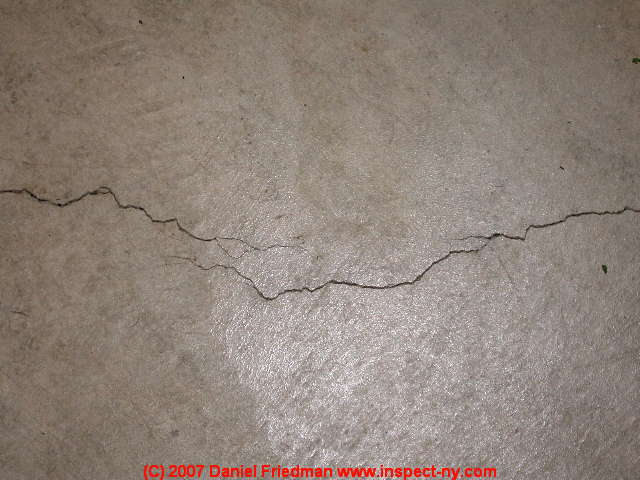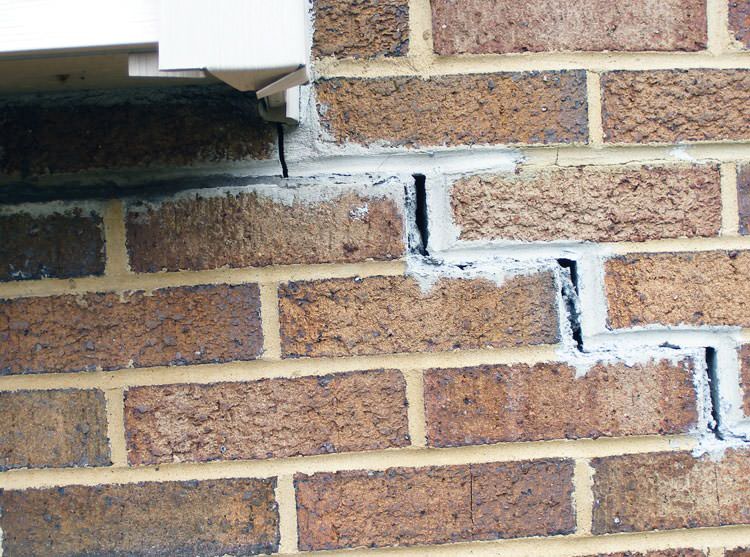Table of Content
Soil that wasn’t adequately compacted before construction.If soil isn’t compacted before construction begins, the heavy structure built on top will sink into the ground unevenly. This category includes any use of substandard incompatible materials or a badly planned process of pouring out the slab foundation. Mixed brands or strengths of cement, incorrect cement-aggregate ratios, uneven curing or reinforcement of the concrete, all contribute to the appearance of cracks. Some soils have a large capacity to absorb moisture and are heavily affected by it.
Your home’s foundation—the concrete walls surrounding a basement or crawl space—supports the entire weight of the house, so it’s natural to be concerned if you discover cracks in the concrete. Excess water in the soil around a home can cause a lot of trouble. If the water doesn’t have a way to drain off, hydrostatic pressure will build and press against the wall. If this isn’t relieved, the wall will eventually start to bow inward and even crack. C-channel wall anchors, wall plate anchors, carbon fiber wall straps, I-beams, and epoxy are used to repair cracks in basement foundation walls. While any crack can be unsightly, diagonal and vertical foundation cracks are usually the result of normal settling, and they can be treated as directed above.
Faults in Construction
The very top will shrink the most because it has the least resistance, while the very bottom will shrink the least because the mesh is there. (This is what creates cracks on the surface.) We use rebar , install it in the middle of the slab, and we don’t EVER have cracks. @JimStewart The slab could be fiber reinforced, but it still must be installed with good building practices. We install slabs without mesh but we recognize good practices by decreasing the spacing of control joints, protect the vapor barrier, etc. The seams between drywall panels are often filled with drywall mud before they are covered with paper tape.

Make sure to keep drains, gutters, and downspouts clear of debris so water can’t pool near the foundation. And to make sure little problems don’t balloon into major headaches, always keep track of and repair small cracks as soon as you notice them. Any crack that admits water is a concern for the same reasons as wet cracks in concrete slabs.
New Home Foundation Cracks
These can be linear when occurring along a rebar and are usually caused by poor joint construction or rusting rebars inside the concrete. Rust is expansive and can thus create pressure that causes damage to the slab. The presence of moisture exacerbates the corrosion, and this worsens if the spalling is severe enough to expose the metal.

On a monthly basis, sales declined by 7.7% in November compared to October, and were down 35.4% compared to November, 2021, the NAR reported. But out-of-track window and exterior vinyl planking might indicate structural settling. Mike, I’ve seen plenty of the type of thing your picture shows because of poor site prep before the pour of the slab, too. "In essence, the residential real estate market was frozen in November, resembling the sales activity seen during the COVID-19 economic lockdowns in 2020," said NAR Chief Economist Lawrence Yun. Total refinance application volume, however, was still 85% lower than the same week one year ago, indicating that most homeowners have locked in rates at or below the current 6.31%.
How to Evaluate Foundation Wall Cracks
It would be helpful if sellers disclosed what they knew but they don’t around here. My question for the forum is do you recommend an engineer or a foundation contractor/home builder. Is there any way to fix the floor if the problem isn’t current or ongoing.
The ideal soil also lets water drain through if it gets wet. Coarse sand, gravel, stable clay, and mixtures of these are examples of good soil. Avoid soil that is high in organic materials or made with unstable clay.
Soil composition, water damage, inferior construction, earthquakes, and possible infestation of mold or termites could cause foundation issues. Even the slightest of quivers could be an issue as it intensifies the cracks are already present in the building. Damages to your foundation could result in large, jagged, or diagonal cracks, often more than a quarter-inch. Such issues need to be addressed as soon as possible to preserve the structural integrity and value of your home. If you’re searching for “cracks in foundation when to worry,” you’re not alone.

It’s going to be really disappointing to see some cracks forming in your new house. After all, your house is still quite new, and you saved a lot of money and shelled out a ton of expenses just so you could move into your new house. You probably feel like you wasted your time, money, and effort on a house that you think was not constructed properly because of all of the cracks in the foundation.
Usually, after cracks appear in your foundation, you begin to wonder if it is covered under home warranties. Home Warranties offer several services in their contracts. Homebuilders, however, provide the assurance for a year after purchase of a new home. Normally, it is builders’ warranties that cover foundation, bad wiring, plumbing and structural issues. But, in case of keeping your home appliances and systems in working condition, you must have a home warranty.

The control joints are spaced appropriately and doing their job, unless the contractor did not stop the reinforcing steel through the control joint. Cracks in a newly constructed home are common and can occur either naturally or because of structural problems. It is important to address these issues as soon as possible to prevent them from becoming bigger problems. You will not only preserve the structural integrity of your home but also increase its resale value should you decide to sell the home in the future.





